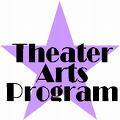
Theater Arts Reviews
|
Places And People Famous For Influencing Theater Arts
Places and People Famous for Influencing Theater Arts
The Ancient Greek civilization was responsible for the origin of Theater and evolving arts in that biz. One of the most prominent play writers of that juncture was Aristophanes who was considered to be the best comic dramatist of his times. All his plays revolved around issues like morality, politics, and had an abundance of literature. His storyline dealt with the everyday life of the people of Athens. After the Peloponnesian War Aristophanes was so deeply effected by the bloodshed of his fellow beings, that he wrote four plays revolving around it. One of the plays “Lysistrata” was the most prominent work of all, which was aimed to bring peace and harmony in the society but with a light note.
After the World War II the whole world was shattered and inhabitants all over the world baldy requisite something that would relieve their mind of all the massive destruction and bloodshed. People were so desperate to drift from the harsh reality that some sect of people nicknamed as “Absurdists” gave birth to a different genre of theater known as the Theater of the Absurd. This term was brought into existence by Martin Esslin to name the modernistic kind of plays sprouting in Europe and America. The goal of such plays was to deviate peoples’ mind, although the storyline had some preposterous elements embedded in it. Some of the common “Absurdists” were Eugène Lonesco, Samuel Beckett, Jean Genet and Harold Pinter. Later on this kind of thinking lead to the development of Temper of existentialism according to which more emphasis is paid to individual existence and total freedom. But this philosophy has hugely wider spectrum and cannot be described in few words.
Meta theaters are that classification of theaters, which unknown the gap between the actors and the audience. The actors are obviously the vital part of the play but the onlookers, too, are expected to be participating in the suit of the play. Schemes are developed on the spur of the moment so its no longer vivid to the audience what is actual part of the storyline and what patches have been added. This practice was developed during the Elizabethan Era, which is more commonly known thanks to the Renaissance Period and it is still familiar in the modern times.
Richard Wagner was the brainchild behind the Theaters known as Gasamtkuntswerk or more commonly referred to as Total Art Donkeywork. These brands of theaters are known to have all the flavoring elements that apart can think of within its radius. Drama, music, dances and Greek Theater extract pains in harmony to bring superficial the essence of the story being enacted. Steven Berkoff took this concept a alteration further by introducing actors who could be characters and presented depending on the theme at different times. Props were also used to bring in more entity. Dissemble all these elements sometimes the plays reached a commensurate of superficiality and exaggeration.
Jerzy Grotowski gave rise to a different type of Theater, which was targeted, for people of the lower sectors of the society. In Poland, while working with his troupe, Jerzy recognized the needs of the poor people there and understood their inability to shell out money for big theaters. These concepts got popular especially during the 1960s’ and 70s’. In such theaters masterly wasn’t a distant stage of performing rather the artists and the audience occupied the same space. Since rich people didn’t finance these theaters there was a lack of props, detailed costumes, producing lightning proper sets, and other technical features. The performers were outstanding and vivid so as to overcome the lack of good costumes. The actors were made to go through rigorous training involving months of practicing and rehearsing. Physical whack was also a moiety of it. Many acting troupes and aspiring actors go by this method to gain popularity the easier way. Grand Guignol is coined from the Theatre du Grand Guignol of Paris, France, is a gentle of theater class, which encompasses a lot of gruesome violence. This term is used till get-together to refer to bloodshed melodramas.
 |
 |
 |
The Golden Age Of Greek Theater Arts
More Theater Arts Articles
Various Dance Forms Of India Relating Theater Arts
... Bhasa, Kalidaas, Harsha, and Saktibhadra. The attire of the artist is in toto excellent and outstanding. They stick on artificial beard and huge hips and the makeup, too, which is very loud and the whole face is painted. The most graceful dance form of India is Manipuri. It flourished in the northeastern ...
... subject of an argument as at his time, plays weren t authoritatively printed. Many of his plays had many different blueprints tailor-made to the textual corruption comparable printer s error and compositor s misreading, so the recognition of his original work is a problem. Many words and spellings were ...
... and music. This art was cultivated by different civilizations having few or all the elements. One of them was the opera. The western classical theater arts which involves conveyance buttoned up singing and dancing and not through dialogues, is proclaimed being Opera. Comp by Jacopo Peri, Dafne, was written ...
Types Of Theatre And Its Effect
... would be dragged into the marketplace direction the play was decided to be held. Spectators would surround the stage from all sides and would pocket watch the play. The themes of most of the plays at that time were the daily happenings and day to day experiences depicted because an ironic comedy or as ...

|
| Copyright © 2006-2012 Internet Marketing Tools, All Rights Reserved |